People browsing through bike catalogs often come across terms like 'full suspension bike', 'hardtail mountain bike', 'rigid rear end', etc. Full-suspension setup is an alluring choice, especially when eyeing a high-end bike.
Many beginner riders wonder if the full suspension is a marketing gimmick or really affects the bike's performance. This article will go into the details of full-suspension bikes and explain how it affects the riding experience. There will also be many tips on full-suspension bikes helpful for beginners and expert riders alike.
What is Full-suspension Bike?

A full-suspension bike is a bicycle with suspension systems in the front and rear wheels. The front suspension of the bike is called a suspension fork. The rear suspension is called the suspension shock or rear shock. The rear suspension is the defining part of the full-suspension bike. Without the rear suspension, the bike becomes a hardtail mountain bike.
The rear suspension also plays a major role in the bike's comfort, performance, and ride quality. The effect of suspension on the performance is determined by 'suspension travel'. Suspension travel is the maximum distance a suspension can move on uneven surfaces.
What is the difference between dual-suspension and full-suspension bikes?
Dual-suspension bikes and full-suspension bikes are the same things. Both these terms refer to a bike with suspensions in the front and rear wheels.
Main Components of a Full-suspension Bike
The main parts of a full-suspension bike are:
Suspension Fork
The suspension fork is the front suspension of the bike. Suspension forks are not exclusive to full-suspension bikes. They also find applications in hardtail mountain bikes, gravel bikes, downhill MTBs, enduro bikes, trail bikes, etc.
The suspension fork travel distance lies between 80 mm to 200 mm. The higher distance is better for downhill riding. Lower suspension travel is better for climbing ability. For a versatile bike, 100 to 170 mm suspension travel is suitable.
There are multiple types of front suspension forks. These types are:
Suspension Spring
Suspension springs absorb bumps and shocks through spring action. These are some of the cheapest and simplest suspension setups. Spring suspensions come with adjustable options to set the suspension to a hard or soft position. However, these suspensions can be abrupt, reducing comfort.
Oil Spring Fork
Oil spring forks combine the effect of spring suspension with oil dampeners. The purpose of oil is to dampen the spring recoil action and vibrations. This adds some comfort to the suspension performance. Oil spring fork is more expensive than ordinary spring forks.
Oil and Gas Fork
The oil and gas fork replaces the spring action with an air gas chamber. This option is more adjustable than the oil spring fork. Riders can adjust the air pressure of the suspension to modify the hardness or softness. The ideal air pressure value can be chosen based on the rider's weight. These suspensions are expensive.
Dual Gas Fork
A dual gas fork contains two air chambers. One air chamber replaces the spring, and the other replaces the oil. The oil replacement air chamber has a positive air pressure. The spring replacing the air chamber has a negative air pressure. This suspension system is complex and expensive.
Rear Shock
The rear suspension of the bike is called the rear shock. Unlike a front suspension, the rear suspension is exclusive to full-suspension bikes. The shock provides better traction for the wheel in uneven terrain. Shocks keep a full-suspension mountain bike touching the ground, even on bumps.
The shock is fitted in the main central triangle of the bicycle frame. One arm of the shock extends to the rear triangle of the bike. This arm holds the rear wheel to absorb impacts. There are many options to pivot the rear arm with the wheel. Each option provides a different effect on the rear shock performance.
There are two types of rear shocks:
Coil Shocks
A coil shock uses a coil spring for the suspension action. The spring is sturdy but adds more weight penalty to the bike. Many riders replace the spring to use one suitable for their weight. Coil shocks do not mention the net suspension travel distance. Instead, the coil shock rating provides an overall weight and spring travel.
Air Shocks
Air shocks replace the spring coil with an air-sprung fork. Air shocks are adjustable suspension systems. The adjustment is made with a shock pump. These are highly versatile suspension shock systems. They have more minute adjustments than coil shocks.
Frame
There is a difference between full-suspension bike frames and hardtail mountain bike frames. Full suspension bikes have special design configurations in the frames for pivot points of the rear shock. Manufacturers prefer lighter frame materials to counter the extra weight of the suspension.
The proper frame size is chosen according to the rider's height. Here is a size chart for your reference:
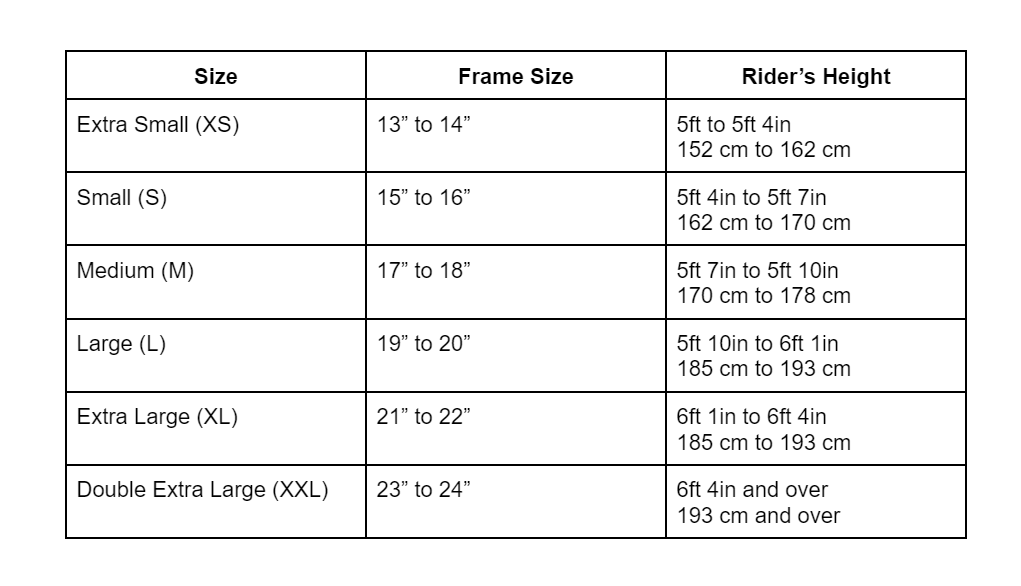
Gearing
The number of gears in a full suspension bike is similar to the other types of bikes. There are usually 18, 21, 24, or 27 gears. The gears are divided into two sets. The set in the front is on the pedal. It is called the crankset. The set on the rear is present on the wheel. It is called the cassette.
For full-suspension bikes, Cranksets come in 2x or 3x configurations. The cassette can have 7 to 13 gears. There are also 1x cranksets, but they aren't used in full-suspension bikes.
It is important to note that the number of gears in a bike does not mean the number of individual sprockets. Instead, the number of gears refers to the possible gear combinations of the crankset and cassette. For instance, for a 2x crankset and 9x cassette, the bike will have 18 gears (2x9).
Brakes

There are three major options when considering the types of brakes you want in your full-suspension mountain bike. These options are:
Caliper Brakes
Caliper brakes are the traditional braking option for bikes. These use a V shape pivot for a caliper on either side of the wheel rim. Brake levers apply tension on a cable that controls the calipers. This leads to the braking action of the bike.
Caliper brakes are cheap and very easy to maintain. They work in all weather conditions, like rain and extreme snow. However, their braking performance is not adequate in mountain biking.
Mechanical Disc Brakes
Mechanical disc brakes are a great upgrade from caliper brakes. These brakes have circular discs installed on the wheel axle. The breaking power of the disc brakes is considerably better than the calipers. However, riders find problems using them in rainy conditions due to reduced friction.
Hydraulic Disc Brakes
Hydraulic disc brakes use fluid pressure to control the discs instead of a cable. Hydraulic disc brakes are the golden standard for full-suspension mountain bikes. They offer the most braking power and the best braking response. However, they are expensive and face problems in the rain.
Wheels
A full-suspension mountain bike is designed to handle rough terrain and off-road riding. Therefore, the wheels installed on the bike match to suit this requirement. Wide tyres are the preferred option regardless of the type of full-suspension bike you choose. The particular specification of the tyres depends on the type of full-suspension bike.
For the wheel size, 27.5" and 29" are the most popular option. 27.5" wheel size in full suspension bikes provides extra traction. 29" wheels are better for rollover and speed.
Saddle
Full suspension bikes follow the narrow and uncomfortable saddle principle like other MTBs. The purpose is to encourage the upright riding style crucial for rough terrain. Most riders tend to replace the saddle according to personal preference. Most bikes come with an adjustable saddle height.
Derailleur
The derailleur system switches between the different gears of a bike. It is connected to the gear shifters on the handlebars. Full-suspension MTBs have a front and rear derailleur. A good quality derailleur provides a better gear-shifting experience. Using cheap quality derailleurs can lead to serious breakdowns during the ride.
Different Types of Full Suspension Bikes

A full-suspension mountain bike comes in different variations. Some of the commonly used types are:
Trail Bikes
Higher-end trail bikes often come with a full-suspension setup. Trail riding is the most common application of a mountain bike. Full-suspension mountain bikes provide good comfort and traction on everyday trails. The suspension travel for these bikes typically lies between 120mm to 150mm.
Cross Country Bikes
Cross-country bikes (XC bikes) often use a full-suspension system. An XC bike is designed for speed and efficiency. A full suspension setup helps bring out these elements in the XC bike. The suspension travel of an XC full-suspension mountain bike typically lies between 100 mm to 120 mm. The frame geometry is on the steeper side aiming for better down-country speed.
Enduro Bikes
Enduro racing uses full suspension mountain bikes because it provides extra traction and speed boost for downhill elements. Enduro bikes have to go through steep ascents and descents.
Of course, there is also uphill climbing in enduro racing. Uphill climbing is more difficult with a full-suspension bike. However, the catch is that uphill sections are not timed in enduro racing. Only downhill sections are timed. Here the full-suspension mountain bike provides an edge. Therefore, it is the best option for enduro biking.
Downhill Bikes
Downhill bikes are specifically designed for downhill riding on steep terrain. Full suspension mountain bike turns out to be the best bike for this purpose. Higher suspension travel is preferable on full-suspension downhill bikes. Suspensions with 200mm travel are commonly used.
Advantages of Full Suspension Bikes
There are many benefits of full-suspension mountain bikes. Some of the key benefits are:
-
Better traction: Full suspension mountain bikes have better ground traction. The rear wheel does lose contact with the ground on uneven patches. This provides a better handling capability.
-
Comfort: The rear shock adds a better shock-absorbing capability. This makes the bike more comfortable for beginners and experienced riders alike.
-
Downhill Riding: Full suspension bikes are best for riding downhill. This is partly due to the frame geometry and extra traction.
-
Better Turning: Better handling provides a smoother turning experience to the rider. The rider can make turns at high speed.
-
Technical Terrain: Full-suspension mountain bikes can perform better in jumps and drops. The rear shock absorbs the fall and makes the bike more capable.
-
Adjustable: Rear shock comes with multiple adjustments. The rider can adjust the bike according to weight and preference.
Whilst there are many advantages of a full suspension MTB, it also comes with certain drawbacks. These drawbacks include:
-
More Pedaling Effort: Dual suspension bike requires more effort to pedal when going uphill. This is because the rear shock dampens the physical effort, reducing the pedalling efficiency.
-
Costly: Full-suspension systems increase the price of the bike. This is due to the addition of an expensive rear shock.
-
Heavy: Rear shocks add to the weight of the bike. Extra weight further increases the effort needed to traverse ascents and rough terrain.
-
Maintenance: Adding the rear suspension increases the maintenance requirement for the bike. For instance, rear shock requires frequent lubrication and adjustment.
Where Does Full-Suspension MTB Perform Better?
Full-suspension MTB is great when your riding includes a lot of descents. The performance of dual suspension in these terrains is unmatchable. This includes enduro racing and downhill riding.
Additionally, beginners can consider this option for the rough stuff. Full-suspension MTB is more forgiving and can absorb some mistakes. This can boost the riding confidence of beginner riders.
How Long Do Full Suspension Bikes Last?

A full-suspension bike can last upward of 20 years if you maintain it. The lifespan of this bike is the same as any other good quality bike. The important factor is that certain components, like the rear shocks, will break down and need replacement. The average lifespan of rear shocks is around five years.
The bike's lifespan generally means how long the frame will last. If the frame breaks down, a new bike is needed. Parts like the saddle, chain, wheels, and suspension fork break down after a certain amount of wear and tear.
What is the Cost of Full Suspension Bike?
Decent full-suspension bikes start at $1500. The actual price point can vary significantly. The main factors influencing the price are the brand and the quality of its components. Higher quality components found in professional bikes can even take the price upwards of $5000. $2000 to $3000 is the perfect price range for beginner and intermediate riders.
Where to Buy a Full Suspension Bike?
Cyrusher is the best place in the market for full-suspension bikes. Cyrusher bikes are well known for their exceptional build quality and value for money. Additionally, the electric pedal assist system in all Cyrusher bikes adds a new dimension to mountain biking.
Cyrusher XF800, for instance, provides a full suspension setup for just $2200. It comes with branded components such as Shimano gears. The bike is complemented with a 750 W Bafang motor to provide the juice when your endurance runs out.
Factors to Consider When Buying a Full-suspension Bike
Check out the following factors when choosing which new mountain bike to buy:
-
Cost: Set the maximum spending budget you can afford. Dual-suspension bikes have a wide price range. You can easily find a variant at your price point.
-
Suspension travel: Suspension travel determines the best application of the bike. Larger is not always better in this case. Choose the suspension travel based on your application.
-
Rear shock rating: Rear shock is rated based on weight and travel. If you like the bike but don't like the rear shock, you can change it later.
-
Wheel size: Smaller wheels are better for traction. A larger diameter provides higher speed and smooth rollover. Choose the wheel size you find comfortable.
-
Frame size: The appropriate frame size depends on rider height. Refer to the frame size chart above to choose which one you require.
-
Frame material: Carbon frames are lighter, but aluminum frames are cheaper.
-
Number of gears: More gears better comfort and maneuverability. However, they also need more maintenance and cleaning.
What is the Difference Between Full-suspension and Hardtail Bikes?

Riders often ask for a comparison between a full suspension vs. a hardtail mountain bike. Full-suspension bikes come with a suspension fork and rear shock. Hardtail mountain bikes have a suspension fork but no rear shock.
There is a misconception among some people that dual suspension is supposed to be better due to an extra suspension. However, that is not always the case.
The dual suspension makes the bike great for going downhill with a fast speed and better traction. In this application, the dual suspension system is unbeaten. Hardtail bikes, on the other hand, are great for all-purpose riding. It can go uphill comfortably, go downhill, and ride wonderfully on flat patches.
Therefore, each of these bikes is good for distinct applications. If you are unsure about which one of these you need, hardtail mountain bikes will be the better option. This is because they are a versatile option that helps you discover your preferences.
Conclusion
Dual suspension bikes are nothing short of a modern technology marvel. The full suspension makes riders discover new levels of comfort and riding styles. The beating they can take at rough patches makes it possible to try your biking skills anywhere.
Frequently Asked Questions (FAQs)
Here are the answers to some commonly asked questions regarding full suspension MTB:
Can you ride a full-suspension bike on the road?
Yes, you can ride a full-suspension bike on the road. However, the full suspension will need more effort on the pedals. Road bikes are more suitable if you will only ride on roads.
Are full-suspension bikes good for long distances?
Full-suspension bikes are not good for long distances. This is especially true when the terrain has lots of climbing. However, this limitation can be avoided using full-suspension eBikes provided by Cyrusher. These bikes have pedal assist that can provide a chunk of the power, reducing fatigue.
Are full-suspension bikes harder to pedal?
Yes, full-suspension bikes are harder to pedal. This is because the fork and rear shock absorb a portion of the pedaling efficiency. This is the reason riders don't prefer these bikes for climbs.
Are full-suspension bikes better for your back?
Yes, full-suspension bikes are considerably better for the back. The rear shock absorbs the bumps and drops. Frames without rear shock often cause backache and rider fatigue.
Are full-suspension bikes slower?
Full-suspension bikes are slow on climbs and flat surfaces. In downhill mountain biking, the extra suspension gives the rider confidence to go faster.

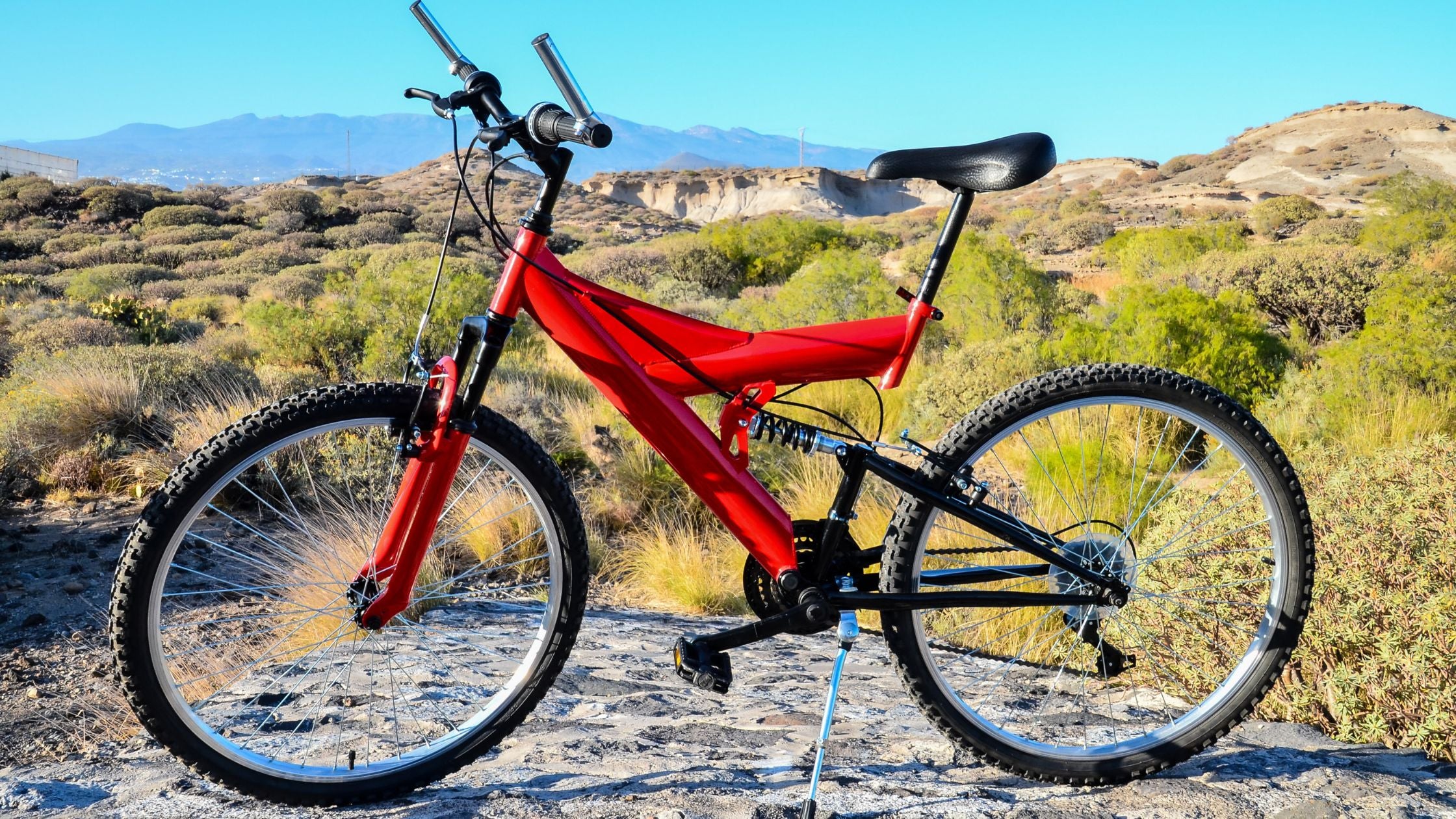


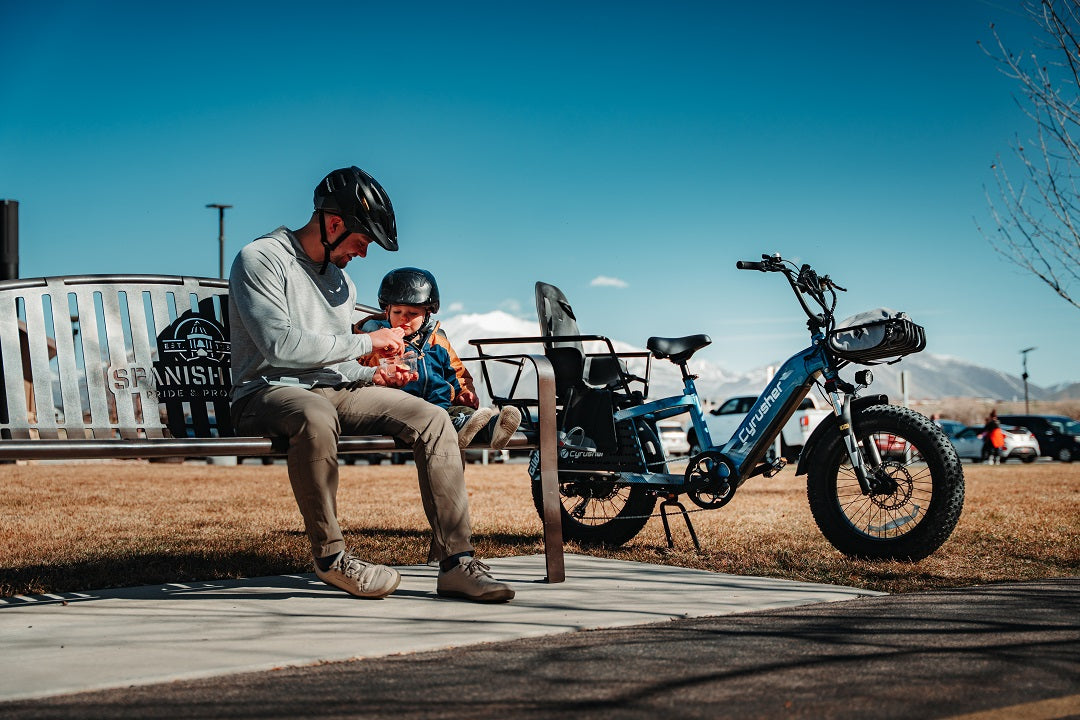
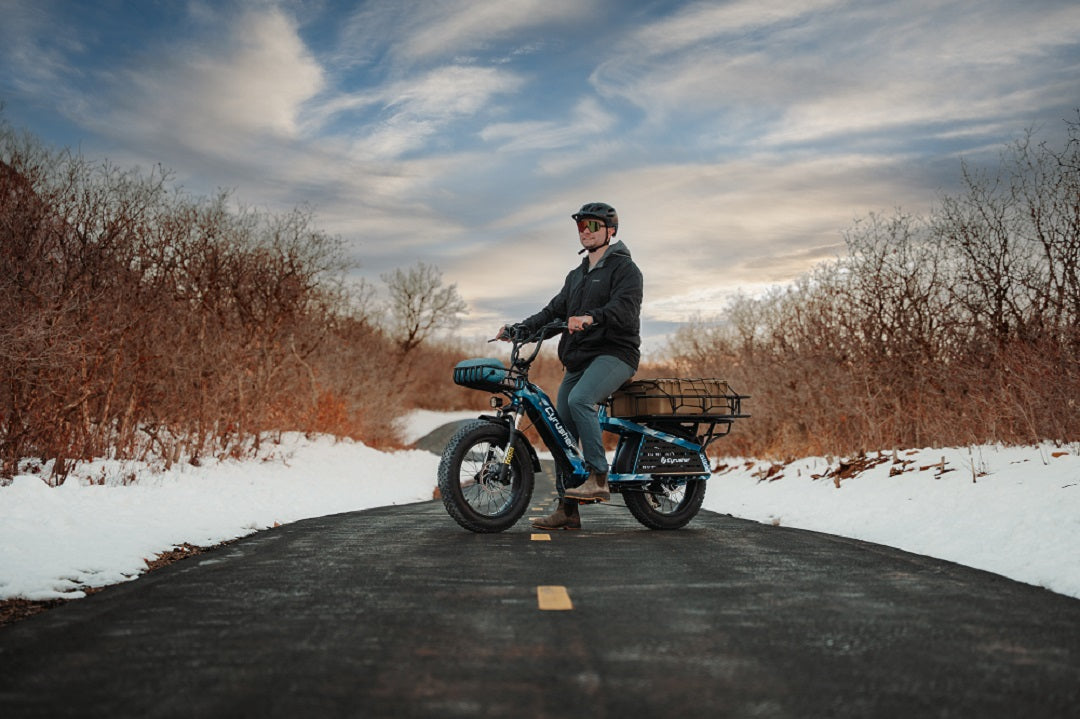
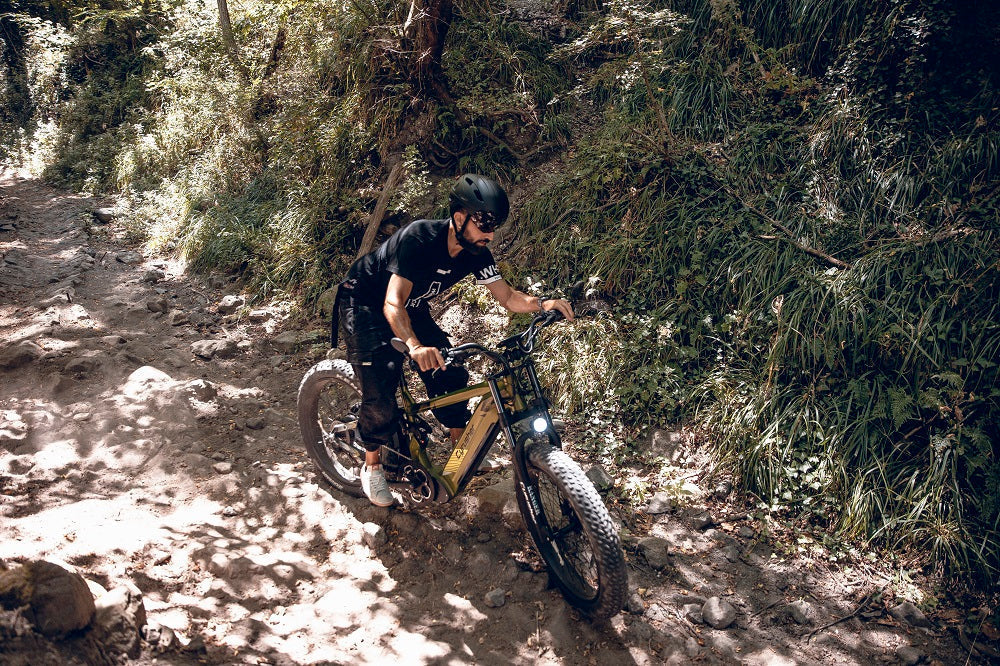
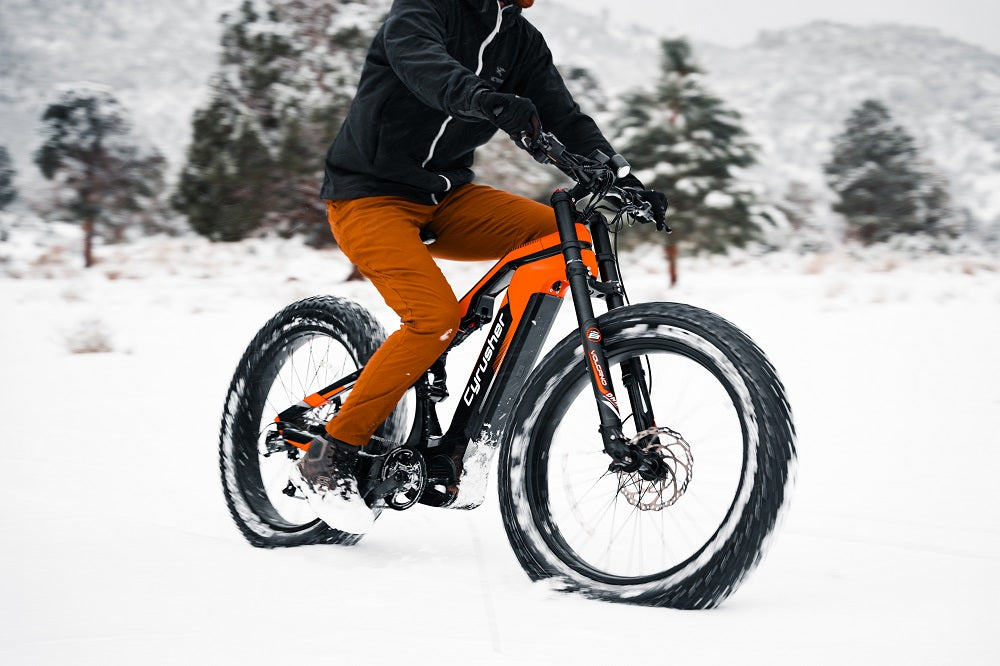
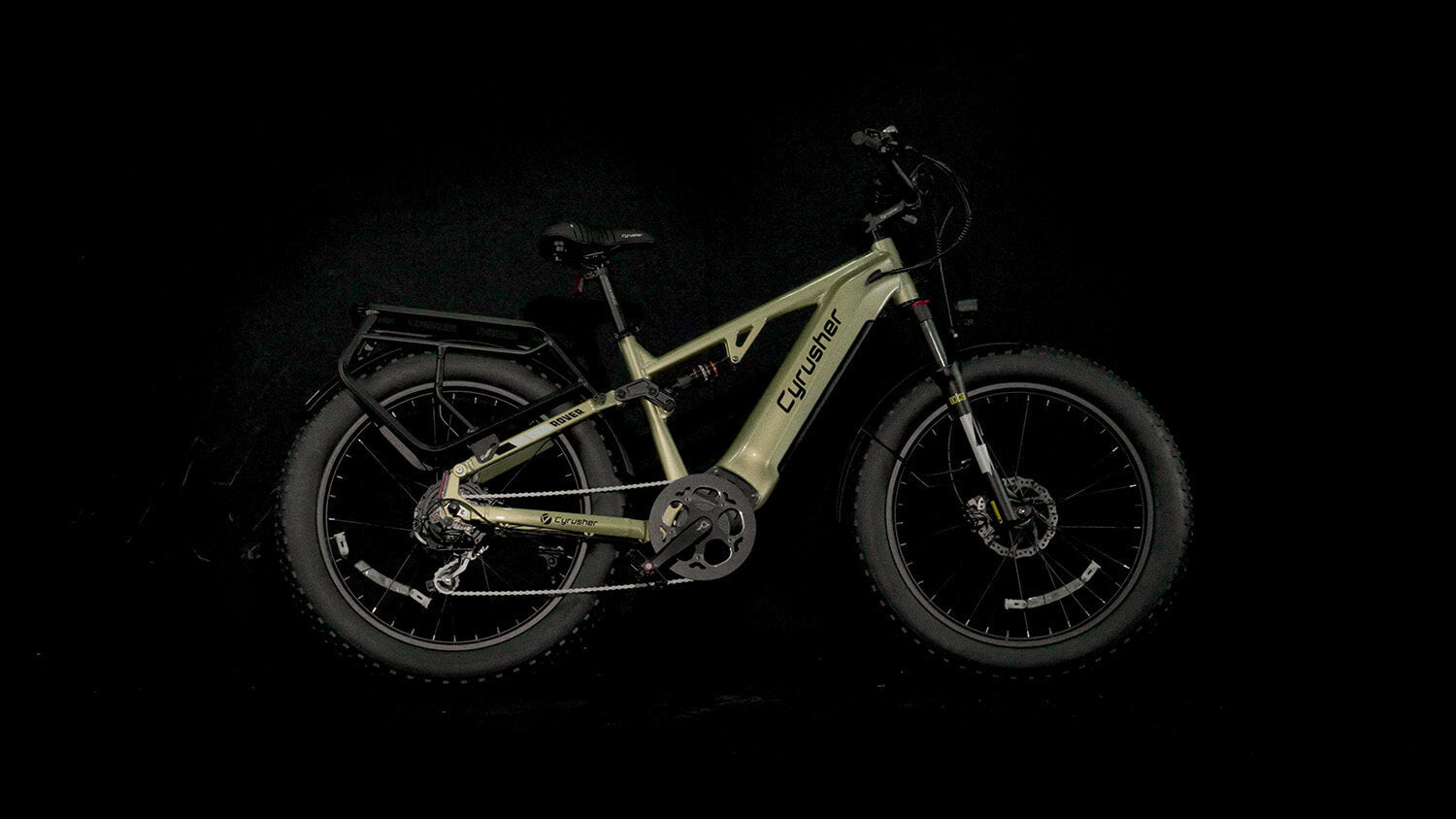

Share:
The Ultimate Guide to Mountain Bike
What is a Motorized Bicycle?